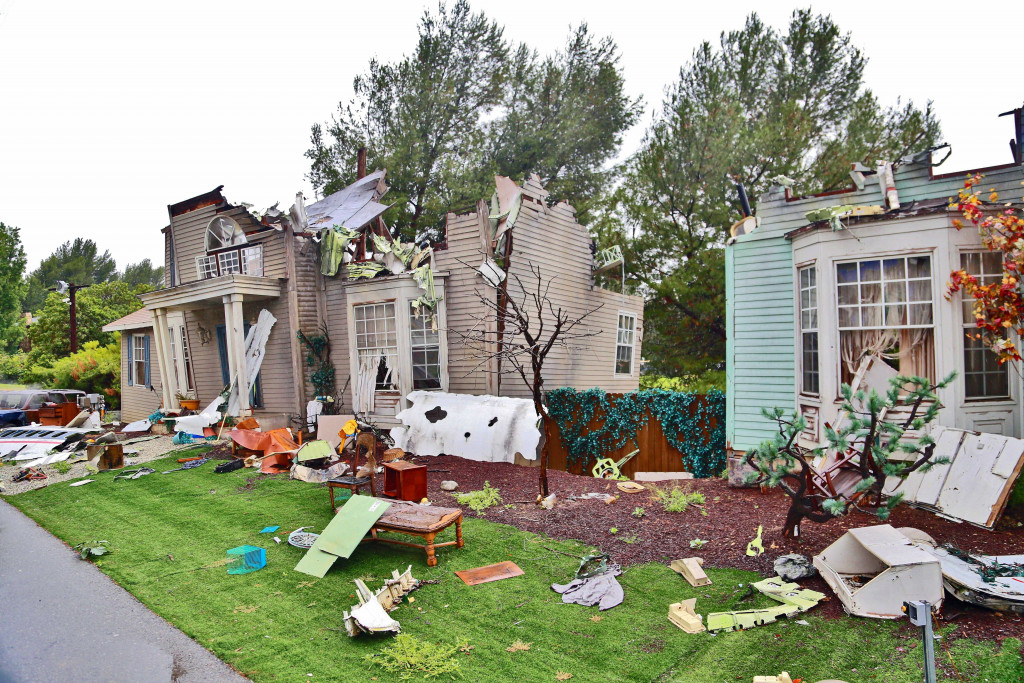- Inspect the home for structural damage and avoid entering any storm-ravaged area until a professional thoroughly inspects it.
- Document any damage found while cleaning debris, such as broken windows, damaged siding, or weakened foundations.
- Contact your insurance provider and file a police report if theft or vandalism occurred during the storm.
- Research reputable storm damage contractors before signing a contract and ensure they provide proof of liability insurance coverage.
- Following these steps can reduce further harm, protect yourself from potential losses, and help you recover from the effects of severe storms.
When a storm hits your home, it can be devastating. It can cause damage in the form of structural and financial losses, as well as emotional distress. Unfortunately, the adverse effects of storms on homes occur far too often. According to the Insurance Information Institute (III), severe thunderstorms are responsible for more than half of all catastrophic wind and hail losses in the United States. It is reported that these storms caused $120 billion in insured losses in 2022.
Storms can affect homes, including roof and siding damage, flooding, and even broken glass due to flying debris or hail. The most damaging impact of a storm is typically found in its aftermath. If a storm has damaged your home, it is essential to reduce further damage and protect yourself from potential harm immediately. Here are a few steps to take to ensure safety after a severe storm.
Inspect Structural Damage
The first rule of every storm-damaged recovery process of a home is to avoid entering the area at all costs. There is always a chance of hidden damage to the house, such as weakened floors or walls, which can make it dangerous if not properly inspected. A study by the Insurance Institute for Business and Home Safety (IBHS) found that 35% of deaths happened due to weather damages. Before entering a storm-ravaged area, it is essential to have a professional inspect the home for structural damage before proceeding any further.
There will be plenty of time to clean up the debris, but safety should always come first. Here are a few areas to inspect for structural damage:
Roof
Strong winds, hail, and debris can damage the roof. Inspecting the roof for any cracked shingles or missing tiles that can weaken it over time is essential. Check around chimneys and other structures for signs of damage as well.
Siding
Look for cracks in siding, particularly at corners where wind gusts can cause more harm. Also, check for dents caused by large objects such as trees, branches, or flying debris.
Windows & Doors
Please look over all windows and doors for broken glass and frames, which can be dangerous if not adequately addressed promptly. In addition to checking these areas, it is essential to ensure they are securely closed, so no additional water enters your home from the outside elements.
Home Foundation
Unfortunately, foundation damage is the most difficult to detect and costly. Look for signs of settling or cracking in your home’s structure, including door frames, windows, and walls.
A professional should inspect any areas that have been affected by storm damage. It is essential to ensure safety before attempting any clean-up activities.
Clear Debris and Document Damage

Once the home has been inspected and deemed safe to enter, start cleaning up any debris that is on the property. Doing so can minimize overall damage. Debris will become a breeding ground for mildew and mold, which can cause further damage to the home if left untended.
Document any damage that is found during the clean-up process. Take pictures of broken windows, damaged siding, or other structural elements impacted by the storm. These photos may be needed later for an insurance claim or other legal matters.
Contact Your Insurance Company
Don’t hesitate to contact your insurance provider to inform them about the storm damage. They will typically send an adjuster to inspect your property before they consider covering any losses you may have incurred. Be sure to submit any documentation or evidence you’ve collected while cleaning up the debris to expedite the claims process.
In addition to filing an insurance claim, you may also need to file a police report if there was any theft or vandalism during the storm.
Secure Repairs and Protect Yourself

Once your home has been inspected and any damage documented, it is essential to seek professional help for repairs. Do your due diligence when researching storm damage contractors for hire. Check reviews and references, and ask about their experience with similar jobs before signing a contract.
Please carefully read through any contracts before signing and ensure you understand everything outlined in the agreement. Familiarize yourself with all warranties and guarantees provided by each contractor as well. Finally, ensure the contractor provides proof of liability insurance coverage in case of an accident.
Final Thoughts
Recovering from storm damage is a daunting task. Although no one can predict when or where a severe storm will hit, it’s essential to have an emergency plan in place after the fact. By following these steps, you can reduce further harm and protect yourself from potential financial losses due to the aftermath of a storm.




